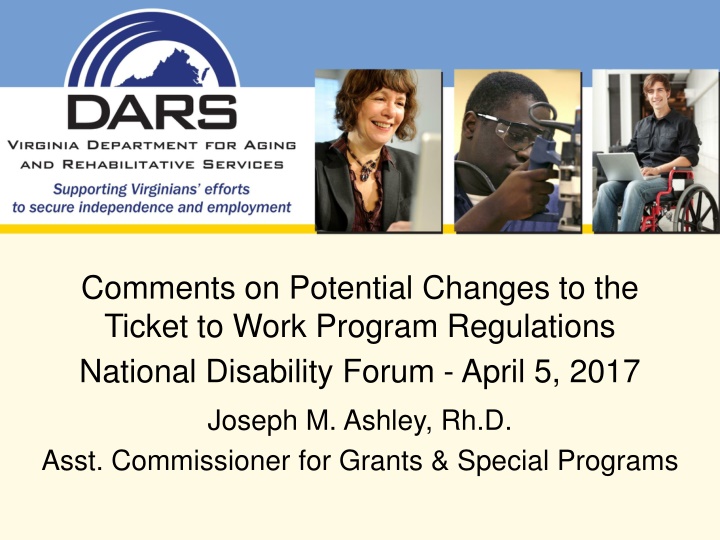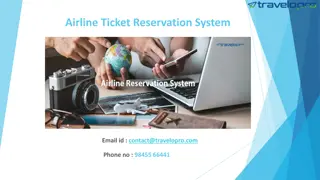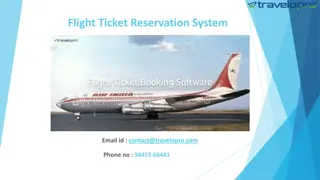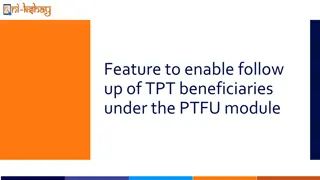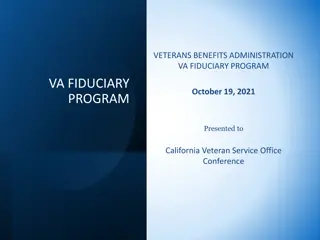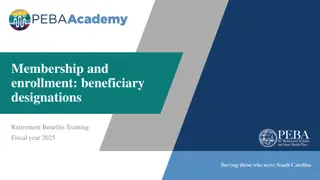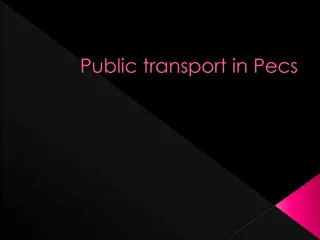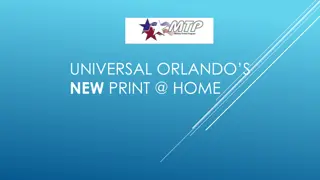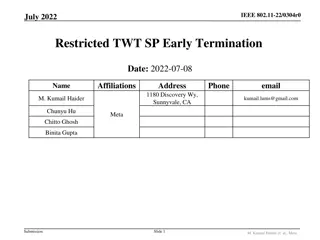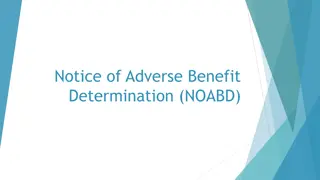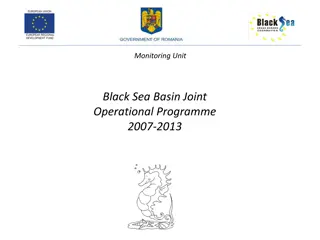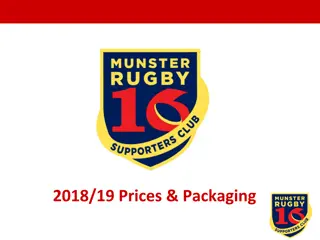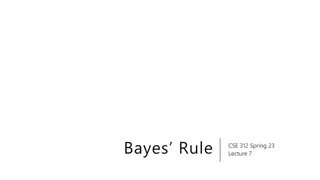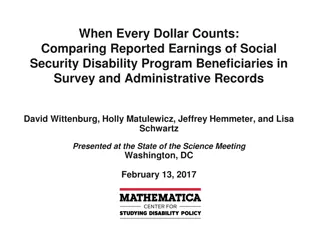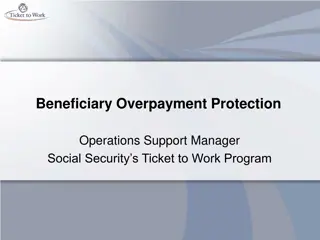Proposed Enhancements to the Ticket to Work Program for Beneficiaries
Encouraging alignment of SSI and SSDI rules, increasing SSI resource limits, improving beneficiary communications, seamless handoffs between VR and ENs, eliminating exclusions in milestone payments, and enforcing agreements between ENs and VR agencies for improved service delivery.
Uploaded on Oct 03, 2024 | 3 Views
Download Presentation

Please find below an Image/Link to download the presentation.
The content on the website is provided AS IS for your information and personal use only. It may not be sold, licensed, or shared on other websites without obtaining consent from the author.If you encounter any issues during the download, it is possible that the publisher has removed the file from their server.
You are allowed to download the files provided on this website for personal or commercial use, subject to the condition that they are used lawfully. All files are the property of their respective owners.
The content on the website is provided AS IS for your information and personal use only. It may not be sold, licensed, or shared on other websites without obtaining consent from the author.
E N D
Presentation Transcript
Comments on Potential Changes to the Ticket to Work Program Regulations National Disability Forum - April 5, 2017 Joseph M. Ashley, Rh.D. Asst. Commissioner for Grants & Special Programs
Introductory Remarks Encourage SSA to use demonstration authority to continue aligning SSI and SSDI rules and consider increasing SSI resource limits Need for SSA communications with beneficiaries to be accurate, user-friendly, clear and consistent All communications should encourage and support beneficiaries and disability program goals Support Administrative ENs
Partnership Plus Handoffs Allow the Individualized Employment Plan (IEP) required by vocational rehabilitation (VR) to serve as the Employment Network s Individual Work Plan Beneficiaries served by VR already have IEPs identifying their vocational goals and needed services and supports Not repeating the vocational goal-setting and service planning process will make VR handoffs to an EN more seamless Continuity in planning from VR to EN will enable ENs to focus on beneficiaries job stability and career growth
Partnership Plus Payments Eliminate exclusion of Phase I milestone payments to ENs that receive Partnership Plus handoffs from VR agencies after successful VR case closure, if beneficiaries earnings are below SGA level It often takes time, and the efforts of both VR and ENs, to help beneficiaries achieve SGA earnings Increases willingness of Partnership Plus ENs to take handoffs from VR, when clients are under SGA
Partnership Plus Agreements Clarify and enforce the requirement for ENs to have agreements in place with VR agencies identifying the responsibilities of each If an EN has a beneficiary s Ticket and a VR agency also provides services, VR doesn't receive any reimbursement of its costs Mechanism already exists in Ticket contracts, but there appears to be no enforcement of this requirement Specifying mechanisms for sharing Ticket payments could help build trust between VR and ENs
Expanding Partnership Plus Work with several state VR agencies to pilot an approach similar to the one used in Virginia Virginia VR created strategic partnership with potential EN partners, SSA and the Ticket Program Manager (TPM) When issues arose in implementation, guidance and problem resolution was directly available from SSA and Maximus Consider strategic alliances with VR agencies and potential Partnership Plus EN partners
BPQY Access Expand the current electronic Benefits Planning Query (BPQY) proof of concept project nationally Currently have to wait a month or more for BPQY Timely access will make it possible for VR and EN staff to use BPQY information in career counseling Critical at the time that beneficiaries are ready to enter employment
Enhancing Program Flexibility for VR Allow VR agencies to change a beneficiary s Ticket designation during IPE implementation Currently, VR must decide within 90 days whether to seek traditional cost reimbursement or Ticket payments Beneficiary s employment goals and service needs may change VR agencies currently unable to seek Ticket payments instead, even when affirming they will not seek cost reimbursement Creates a disincentive for VR to develop strategic partnerships leading to better long-term outcomes for beneficiaries who may not reach higher employment levels
Expanding Resources for Beneficiaries Expand resources and supports to help beneficiaries fully understand the choice to go to work by: Increasing the availability of work incentives and benefits counseling services Supporting the development and use of state-specific decision support software Train work incentives professionals and embed them in ENs
Contact Information Joseph M. Ashley, Rh.D. Assistant Commissioner Va. Dept. for Aging and Rehabilitative Services Joe.Ashley@dars.virginia.gov 804-662-7624
